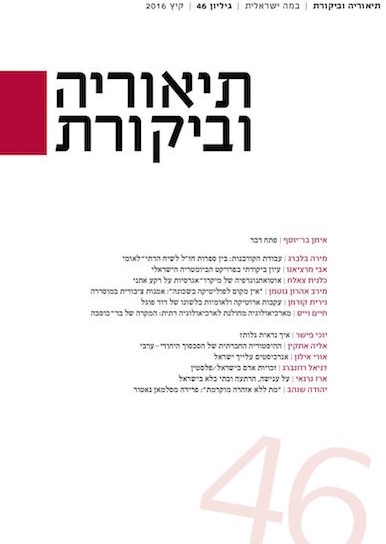"אין מקום לפוליטיקה בשכונה": אמנות ציבורית בשכונת קו תפר בירושלים – בין הפוליטי לחברתי
מירב אהרון גוטמן
מאמר זה מתעד ומנתח את המפגש בין חברי המינהל הקהילתי בשכונת מוסררה בירושלים לבין חברי "מוסללה", קבוצת אמנים שפעלה במרחב הציבורי של השכונה בשנים 2009–2015. תחילתו של המפגש בין שתי קבוצות אלו בשיתוף פעולה ואחריתו במאבק שהסתיים בסילוק קבוצת האמנים מן השכונה. בניגוד לידע שנצבר בתחום לימודי הערים, שלפיו קבוצות אמנים הפועלים במרחב הציבורי הם סוכני שינוי המכונה "התחדשות עירונית", מחברת מאמר זה נדרשת לבאר פעולה שכשלה. שני מושגים מעבודתה של חנה ארנדט סייעו בידיה לנתח כישלון זה: הפוליטי/חברתי, והפעולה בתחום הציבורי. הפעולה הפוליטית בין רבים עניינה התערבות בריבוי החברתי. השלכות הפעולה הפוליטית נתונות לפרשנות ציבורית ולכן הן עלולות להפר את הסדר החברתי הקיים. הפעולה החברתית, לעומת זאת, עניינה הסדרה: היא פועלת בתוך שפה חברתית נתונה ומטרתה לנרמל ולהבטיח את המצב החברתי הקיים. אחת הטענות המרכזיות במאמר היא שהאמנים ביקשו להיות בו בזמן "חברתיים" ו"פוליטיים", אך התעלמו מן האיום החברתי הנובע מתוך הפעולה הפוליטית. באמצעות פעולה פוליטית הם ביקשו לייצר "דיאלוג" ו"נקודות מפגש" (בלשונם) עם הפלסטיני המתגורר מעבר לקו התפר, במוסררה המזרחית, ולפתוח את הריבוי המרחבי לכדי פעולה. ואולם בה בעת הם ביקשו לפעול פעולה זו כפעולה "חברתית" ו"קהילתית", המבוססת על קואליציה עם תושביה היהודים הוותיקים של השכונה. אנשי המינהל הקהילתי בשכונה התנגדו נחרצות לערעור הסדר הקיים ולעיסוק בשאלת הריבוי בהקשר הפלסטיני-מקומי. "חשבנו שיעשו אמנות, לא פוליטיקה", טענו אנשי המינהל ובכך ביטאו את הדיאלקטיקה בין החברתי לפוליטי, שארנדט מצביעה עליה, ואת תחושת הרמייה והאיום שיצרה דיאלקטיקה זו בקרב נציגי התושבים הוותיקים. מרגע שנסדק האמון ולא נותר עוד מקום לא לסליחה ולא להבטחה – הומר כוחה של הפעולה באלימות.


